How long does asbestos stay in the air and is it dangerous? Can you prevent asbestos exposure? Asbestos is deadly for the human respiratory system, and it is claiming the lives of numerous people every year. Keep reading to know the full truth!
A Quick Overview
Usually, asbestos fibers remain in the air for an estimated 48 to 72 hours.
- If there is no airflow or breeze, asbestos can settle earlier than 2 days.
- Disturbed asbestos can remain in the air for more than 3 days.
- In areas with air circulation, it can remain longer than 3 days.
- In the worst-case scenario, people would inhale the floating asbestos and invite lung disease into their bodies.
So it is better to take professional help to determine if your buildings have asbestos. Now let me tell you the types of asbestos and their health risks.
What are the Types of Asbestos Fibers and What Risks Do They Possess?
All types of exposure to asbestos pose a high risk of asbestos-related diseases. You cannot consider any one of them to be safe. There are roughly six kinds of these fibers. Let me tell you about each one and the dangers they possess.
1. Amosite
One of the most dangerous asbestos is amosite, also known as brown asbestos. There are some facts about it:
- Many old buildings have used this asbestos in cement and plumbing materials.
- As it has been used excessively in the past, and it can linger longer in the air, it is prone to be inhaled more easily.
- The most common consequence of the amosite is mesothelioma and lung cancer.
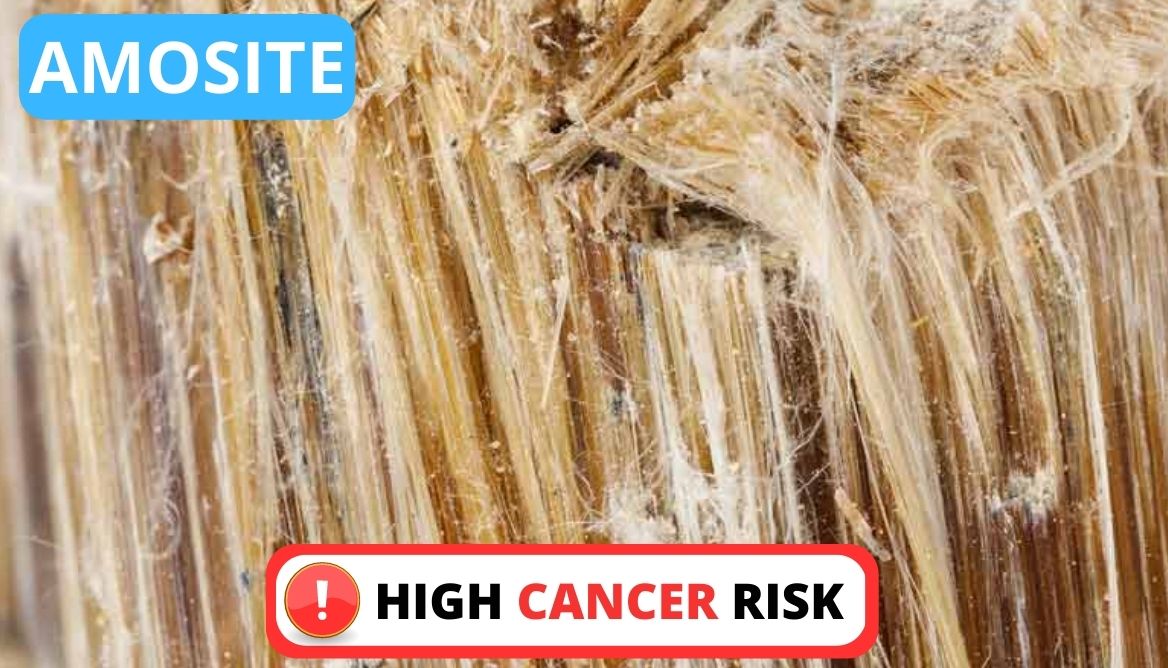
Today, the amosite is no longer used in construction. But its high cancer risk should make you aware of the possible danger. So while working in old buildings, you should wear protective equipment.
2. Chrysotile
Chrysotile is the most common asbestos to cause lung cancer and asbestosis. Asbestosis is a lung disease with the symptoms of chest pain, breathing problems, and chronic coughing, and it can lead to cancer.
I recommend reviewing the Top 5 best air purifiers for asbestos removal!

- Chrysotile can settle down in the parenchyma before the lung can remove it.
- Only a few people survive this asbestos exposure.
- There are a lot of products in which chrysotile is used, including cement, pads, and gaskets.
- Its heat resistance capacity makes it useful for various materials.
3. Anthophyllite
Though anthophyllite is a rare form of asbestos, it still possesses a certain risk of mesothelioma and other asbestos-related illnesses. Today you can only find it in roofing material and cement. Previously, talcum manufacturers used these fibers.
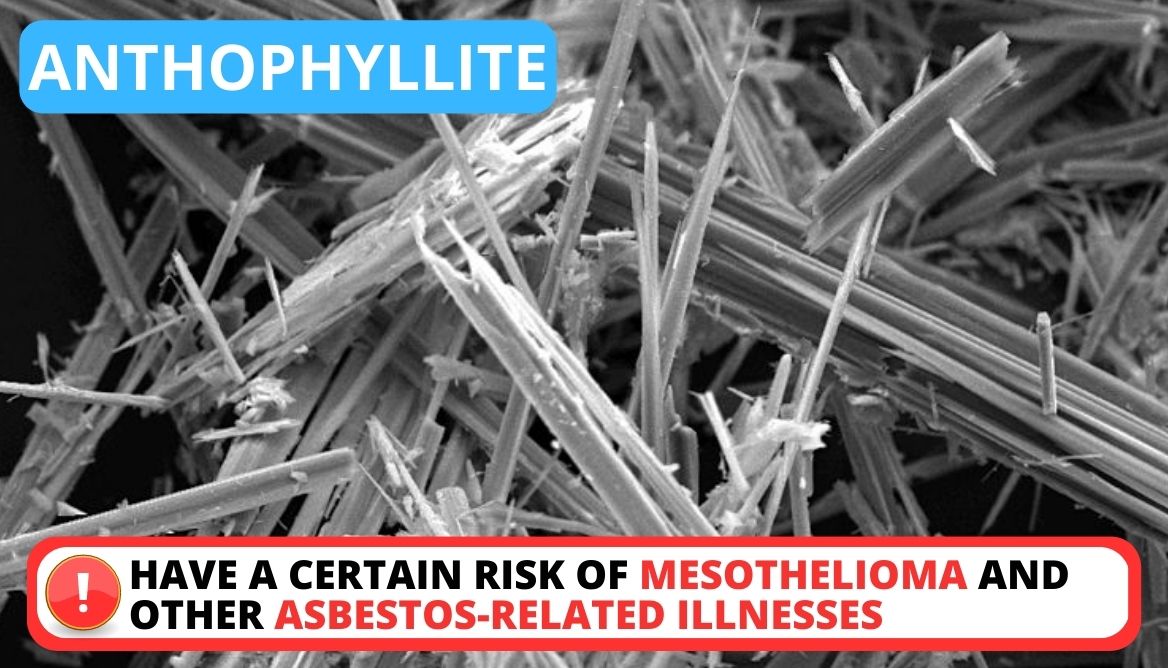
4. Crocidolite
Crocidolite, also known as blue asbestos, is the most harmful asbestos of all.
- This fiber is very thin and can float in the air for a longer time.
- Even short-term exposure to this poses a higher risk than anthophyllite.
- Once inhaled, it can develop into cancer and other asbestos-related illnesses.
- This is used in tiles and insulation material.
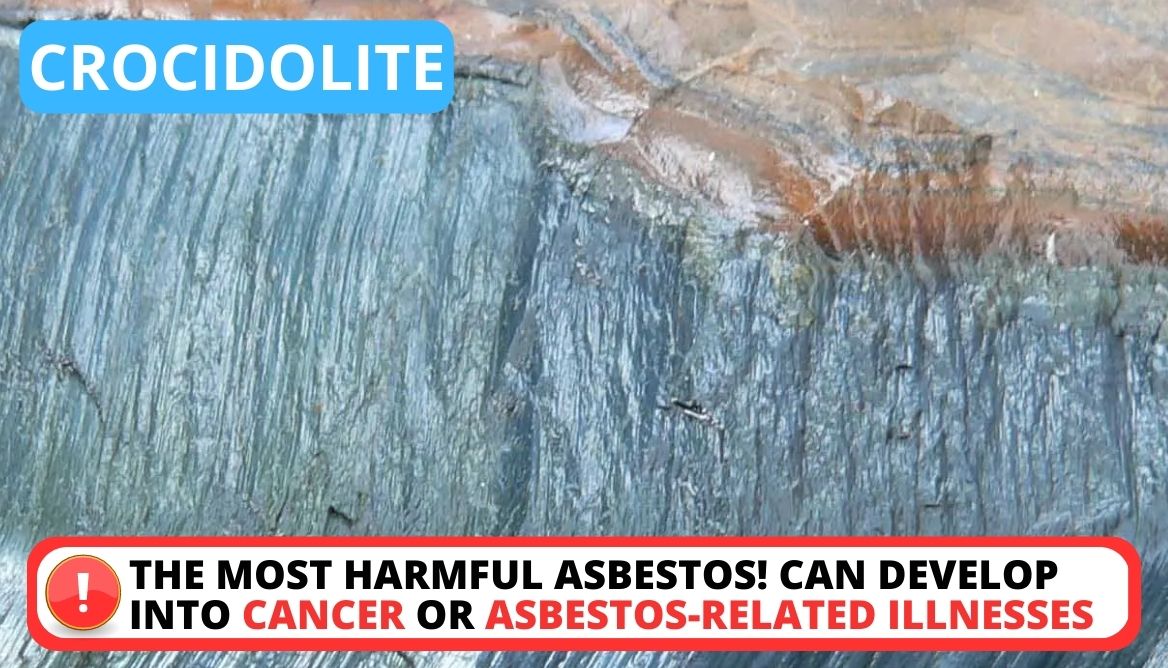
5. Actinolite
Just like anthophyllite, this one is also a rare substance. However, long asbestos exposure can generate several health hazards, including mesothelioma. Though there are groups pressuring to ban this asbestos, it is still used in industrial materials all over the world.
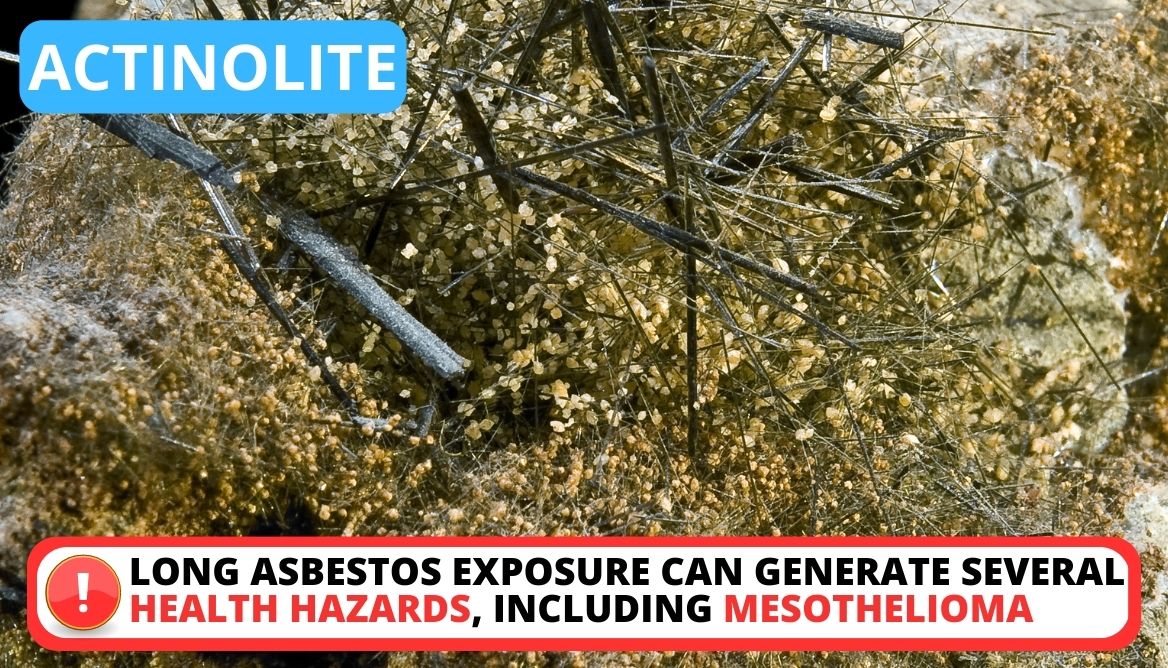
6. Tremolite
Tremolite is another asbestos that is widely used in plumbing, painting, insulating, and whatnot. Its heat resistance capacity and flexibility of use have made it useful to a great extent. But exposure to this asbestos can cause asbestosis, lung cancer, and mesothelioma.
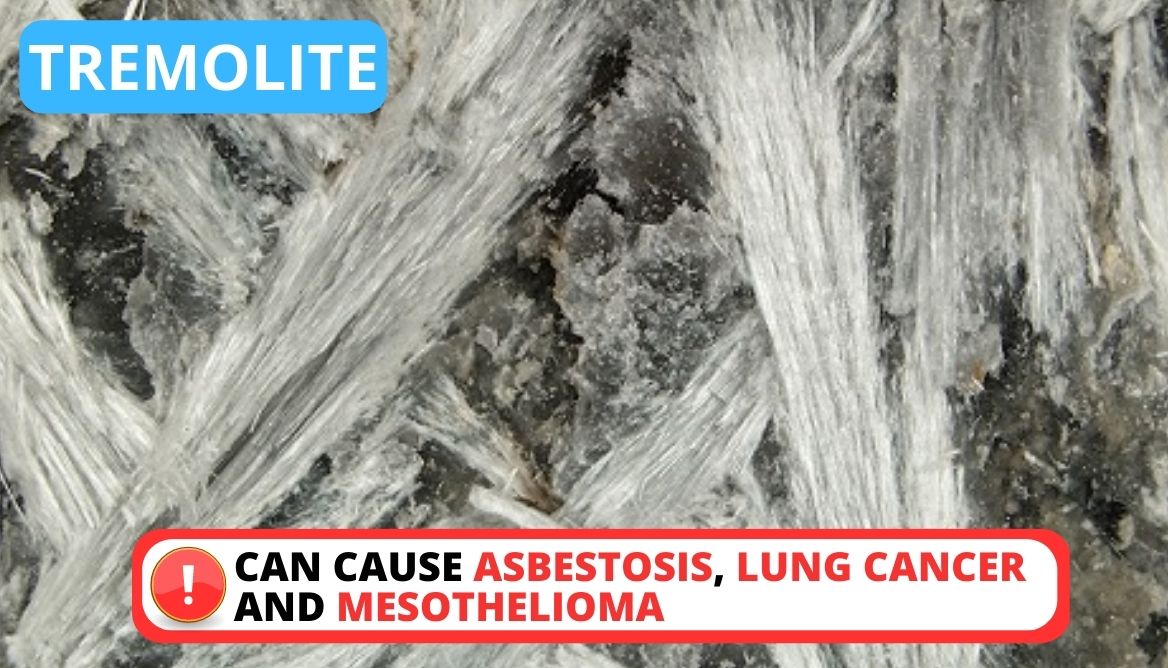
How Long Does Asbestos Stay in the Air Once Disturbed?
How long does asbestos stay airborne after disturbance? It’s a tricky question with no direct answer. Let’s note some points.
- Usually, asbestos can be in the air for two or three days.
- Disturbed asbestos can remain in the air for more than three days.
- Even the slightest breeze can start circulating those fibers without notice.
- If you can curb the air currents, disturbed asbestos can settle earlier.
- In the smaller rooms, asbestos stays longer.
But what to do if asbestos-containing materials are disturbed? Let’s find out.
What Can I Do If Asbestos Is Disturbed?
If you get the slightest notice of disturbed asbestos in your working place, then you must take some swift measures. Here is a list of them.
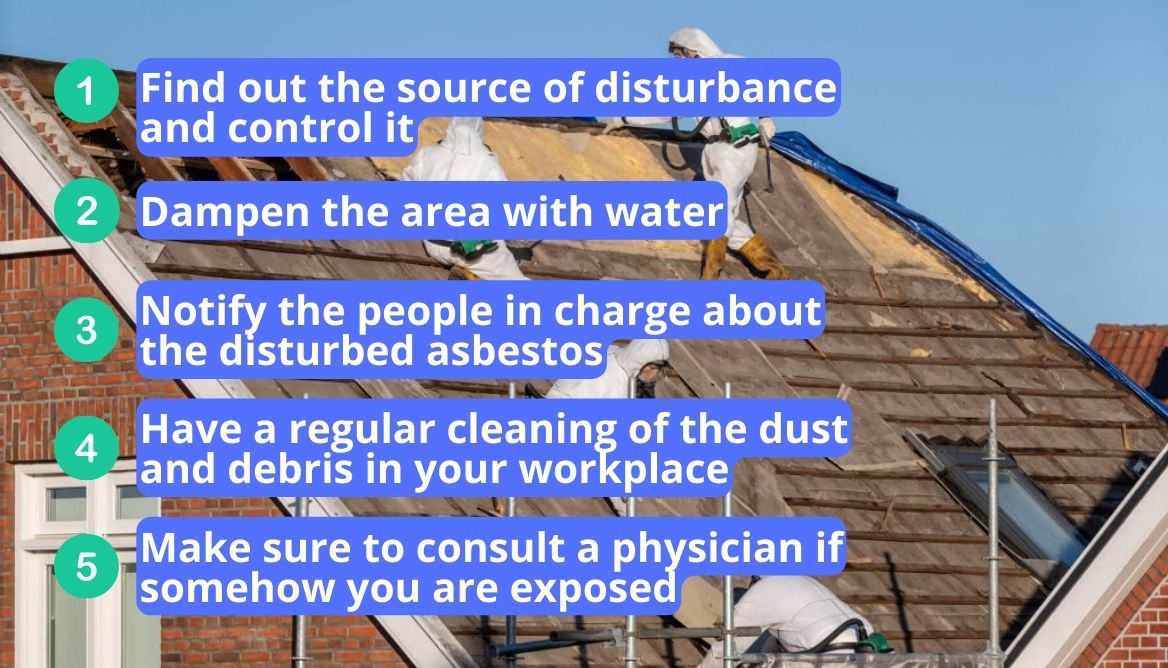
- Try to find out the source of disturbance and control the source.
- Dampen the area with water to prevent asbestos from being airborne.
- Notify the other workers and the people in charge about the disturbed asbestos.
- Have a regular cleaning of the dust and debris in your workplace.
- Use an air purifier for asbestos.
- Make sure to consult a physician if somehow you are exposed.
How Dangerous Is Asbestos Exposure?
Asbestos exposure is deadly, and it can never be safe. Short-term exposure won’t give you any immediate disease, but it may leave some marks.
So, it is crucially important to avoid such exposure without protective equipment.
Are Asbestos Fibres Seen or Smelt?
Asbestos has no smell, nor can it be seen. Only through microscopic inspection can you see asbestos substances. So, it is literally impossible to detect asbestos without lab testing.
Read Also: How Long Does Chlorine Gas Stay in the Air? Check Right Now
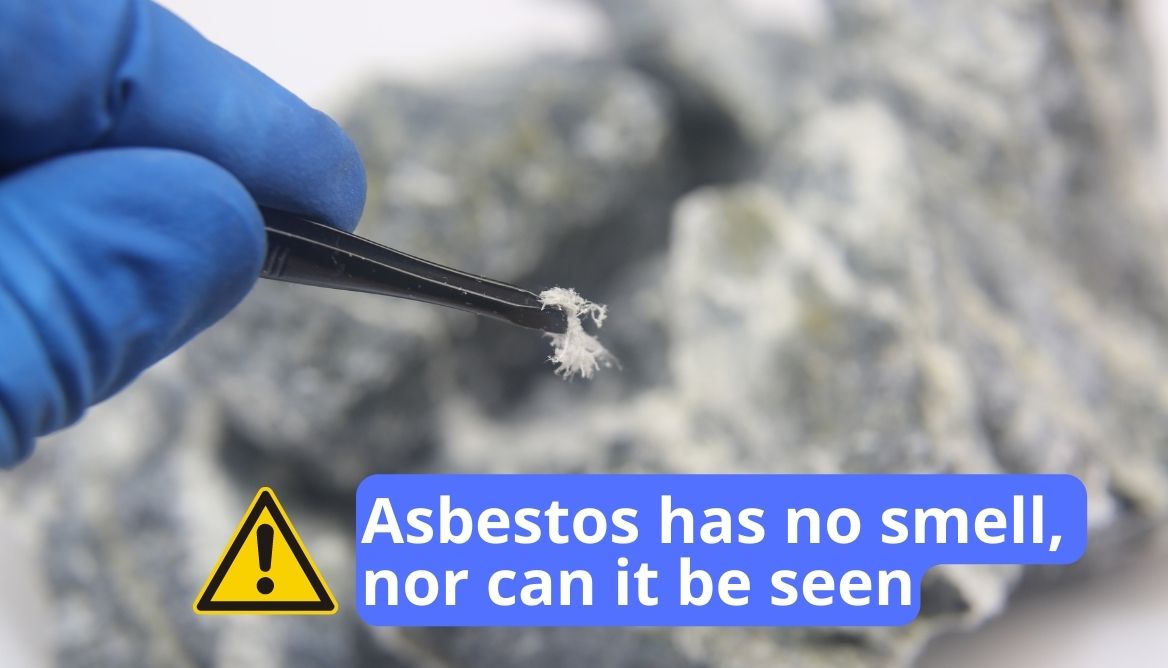
However, if a building has not been renovated in the past 20 years, it might have asbestos substance. I suggest you contact a testing company to find out how much asbestos exposure there is.
Can Asbestos Fibres Travel Far?
Once asbestos is released into the air, it can float for several days. It is not possible to say how far they travel in the air:
- The fibers will travel a good chunk distance if there is a wind flow.
- The settled asbestos will float around for a short distance if it is disturbed.
So, there is no direct answer to the traveling distance of asbestos.
Read Also: What Does an Air Purifier Do? A Comprehensive Guide to Its Functions
FAQ
What Should I Do If Exposed to Asbestos?
You should see a doctor if you are sure that you have been exposed to asbestos.
Is One-Time Exposure to Asbestos Dangerous?
One-time short exposure to asbestos is nothing sort of serious. Yet, you should remain cautious.
Can Asbestos Evaporate into Air?
No, asbestos does not evaporate. Rather these fibers remain in the air for a long time.
Can Lungs Get Rid of Asbestos?
It is not possible to get rid of asbestos from the lungs. However, the lung naturally filters some substances.
Conclusion
So, how many days can asbestos fibers float in the air? It can remain in the air for 2-3 days. Once airborne, it can be inhaled into the human respiratory system and damage the lung.
You should wear asbestos protective equipment if you work in an industrial area. If your building is old and not renovated, you should renovate it with asbestos-free materials.
So, what will you do if exposed to asbestos? Do you need any help from a professional asbestos removal service? Let me know in the comment below.

Danny is a passionate writer who loves to share his knowledge about air purifiers. He’s been writing for 10 years, and he’ll share all that experience with Very Well Home viewers to help you make the best decision when it’s time to buy an appliance!


![Can Allergies Cause a Cough [y]? Symptoms and Treatments Can allergies cause a cough?](https://verywellhome.com/wp-content/uploads/2022/01/www.verywellhom.com-10-1-150x150.jpg)
![How Long Does It Take to Get Sick from Mold Exposure [y]? How Long Does It Take to Get Sick from Mold Exposure](https://verywellhome.com/wp-content/uploads/2022/04/How-Long-Does-It-Take-to-Get-Sick-from-Mold-Exposure-150x150.webp)


